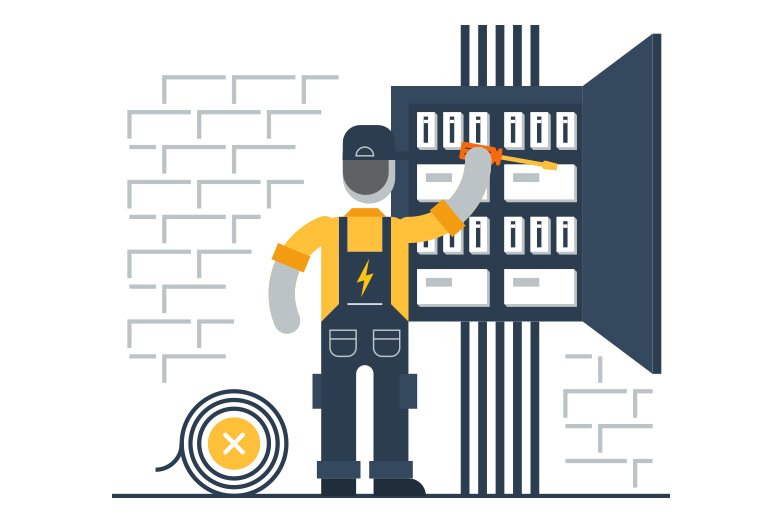
Online safety for children doesn’t require a computer science degree, just some good advice, access to the latest monitoring tools and an occasional recap of the basics.
Here are some steps to consider depending on your parenting style and child’s age.
See what’s available at your property
1. Set the ground rules
- Keep computers and devices in open areas for easy passive monitoring
- Set time limits
- Confirm pre-approved sites
- Keep personal data safe and to never share real names, contact details or locations
- Regularly use the Internet together to reinforce the above as you go and to adapt as required.
2. Utilise the latest “Kid Friendly” messaging apps
Facebook recently released the Messenger Kids app in December 2017 for children under 13.
While the app has plenty of critics for being aimed at children in the first place, in our opinion, it definitely offers a decent balance between keeping your child away from adult-focused social media and giving them a way to learn about social media.
Here are some of the app’s features:
- Full parental controls (you’re in charge of submitting and authorising friend requests).
- Messages and chats can’t be hidden.
- Your child won’t have a public profile, which reduces stranger danger.
- Thousands of kid-appropriate stickers, GIFs, frames and emojis are available to have fun with.
- Kids can report or block inappropriate content with the parent being notified.
Messenger Kids is available for free on iOS devices (iPhone, iPad, iPod Touch) and you can download it here from the App Store.
If you’re an Android user or just really anti-Facebook, consider Monster Messenger as an alternative.
3. Consider private spaces for Multi-player gaming
Most online games now have “public” sessions where anyone with the game and internet connection can battle it out. Private games, in contrast, only allow people to play with their real-life friends without strangers intruding via “public” game sessions. Many games offer private sessions off the shelf, while some don’t and require further investment.
For example, Minecraft is a really popular video game that allows kids to build structures and adventure in a virtual world. Minecraft offers private servers called “Realms” which are essentially a private playground that can be rented for your child and friends at an affordable price. These Realms are invite-only, which eliminates the risk of stranger danger. They also allow your kids to create things together and safely stores their creations when they finish playing for the day.
If off the shelf private spaces aren’t available for your child’s game and you know a bit about networking, consider renting a “dedicated private server” that allows you (or a fellow parent you trust) to control who has access to the game.
If your child uses a gaming console, we’d recommend learning about the way that friend requests and social features work on those platforms, because adding and managing friends will be a key tool for keeping your kids safe.
- Information about the social features of the Nintendo Switch is available here.
- You can find a guide to managing friends on the Xbox here.
- PlayStation 4 has a friend network, and friends can join “parties” which allow people who know each other to chat. Those guides are available here.
4. Utilise parental control software
Parental control software isn’t perfect, it comes with a price tag, isn’t infallible and does take a bit of time to set up. They do, however, provide an extra layer of supervision for when you’re not around, helping to block unsuitable content and police screen time among other things.
Before you invest, it’s important to check compatibility with the devices you own and to choose a provider which offers the features that assist your parenting style.
Here’s a link to PC Mag’s 2018 parental control software review to help choose the right software for your household.
5. Stay abreast of the latest forms of Cyberbullying
Cyberbullying is no longer limited to abusive texts or emails, it now includes messaging services, images, video, even anonymous feedback apps such as Sarahah, a popular app for receiving anonymous feedback from your online friends or social media audience. Learn about the Sarahah app, how it works and why it should be on your radar.
In terms of guides, the eSafety Commissioner is a good place to start, confirms what to look out for and provides support in dealing with the effects of cyberbullying. Your child’s school is also likely to have a cyberbullying policy and can provide support irrespective of whether the perpetrator attends the same school.
6. Provide on-going guidance
Internet safety isn’t a one-off job, it’s changing fast. Let your kids know they can come to you as needed for guidance. You can have regular talks about the creation of age-appropriate content as they grow older.
Whether we like it or not, participating in social media is now a normal part of day to day life and that doesn’t appear to be changing anytime soon. Hopefully, the above points provides some useful tips on how to manage your family’s online presence. If you have any specific questions on any of the points above, get in touch via our Facebook page. We’d be happy to offer some further advice where possible.




